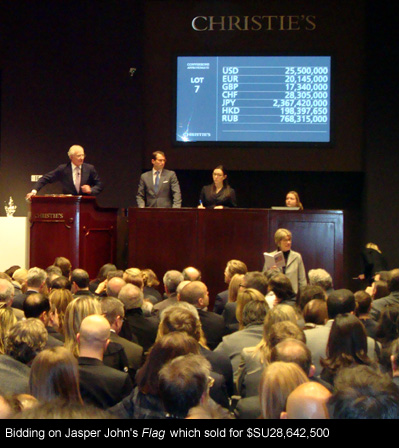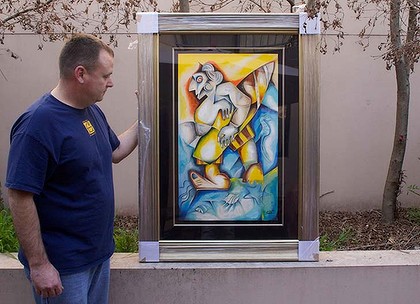A client came to us a few months ago asking us to produce a written report on a drawing that she had purchased on a cruise ship. Apparently the work was sold at auction on this cruise ship and the price paid was in excess of $ 20,000.
This was not the first time that we have been asked about the merits of purchasing art on cruise ships. Even purchasing art in a gallery on a cruise ship has its dangers, as all clients are a captive audience – they have no opportunity to compare prices, values or seek independent advice.
An auction with its contractual agreement means that there is no backing out of the sale or purchase. This serves to protect both the seller and buyer with the auction house acting as the arms-length go-between.
We at Banziger Hulme Fine Art use and recommend auction houses only because these houses have an established name and can be trusted to do the right thing on behalf of their clients.
Last week, we had a phone call from the Gold Coast from a gentleman who had just spent $ 63,000 on three paintings at an art auction in a hotel. He clearly felt he had purchased three paintings at bargain prices. He may well have, but to contact us after the auction is not much good, as by bidding he has agreed to purchase the artworks and this is enforceable by law.
Our main problem in this particular instance is that the auctioneers allowed for just two hours viewing prior to auction. This is a completely inadequate time for anyone to make an informed decision about any purchase of art, let alone the spending of $ 63,000. We are actually quite shocked that such serious money can be spent without seeking a second opinion.
Having said that, we regularly write reports for clients who are about to purchase a work of art and want an informed and unbiased view of the work they are thinking of buying, not just in terms of value and quality, but also condition and provenance of the piece and its overall standing within this particular artist’s body of work.
Although antique rugs are not our business, we saw an advertisement in last weekend’s Sydney Morning Herald that gave a one-hour viewing time prior to the sale.
No-one should be prepared to purchase anything at auction without proper and adequate viewing times.
How to spot a reputable auction house
- The auction house will hold viewings at their permanent premises (not a hotel) for at least three days of 6 to 8 hours each before the sale.
- They will have fine art experts on hand to discuss the works.
- They will produce a catalogue of all the works on sale. Dependent on the value of the works, sometimes this will be a glossy and very expensive catalogue. At other times it will be a photocopy list. However, they will all generally give advance notice of the sale and have an online catalogue of the works so that you can view prior and offsite.
- Details of sales results are submitted to the Australian Art Sales Digest. This database holds records for the last 30 years of sales of 11,500 Australian and New Zealand artists. Internationally, Artprice and Artnet do the same job for approximately 350,000 artists worldwide. Art dealers, galleries and collectors of fine art subscribe to these databases for accurate and honest information.
- Art dealers frequent these auctions to purchase themselves.




